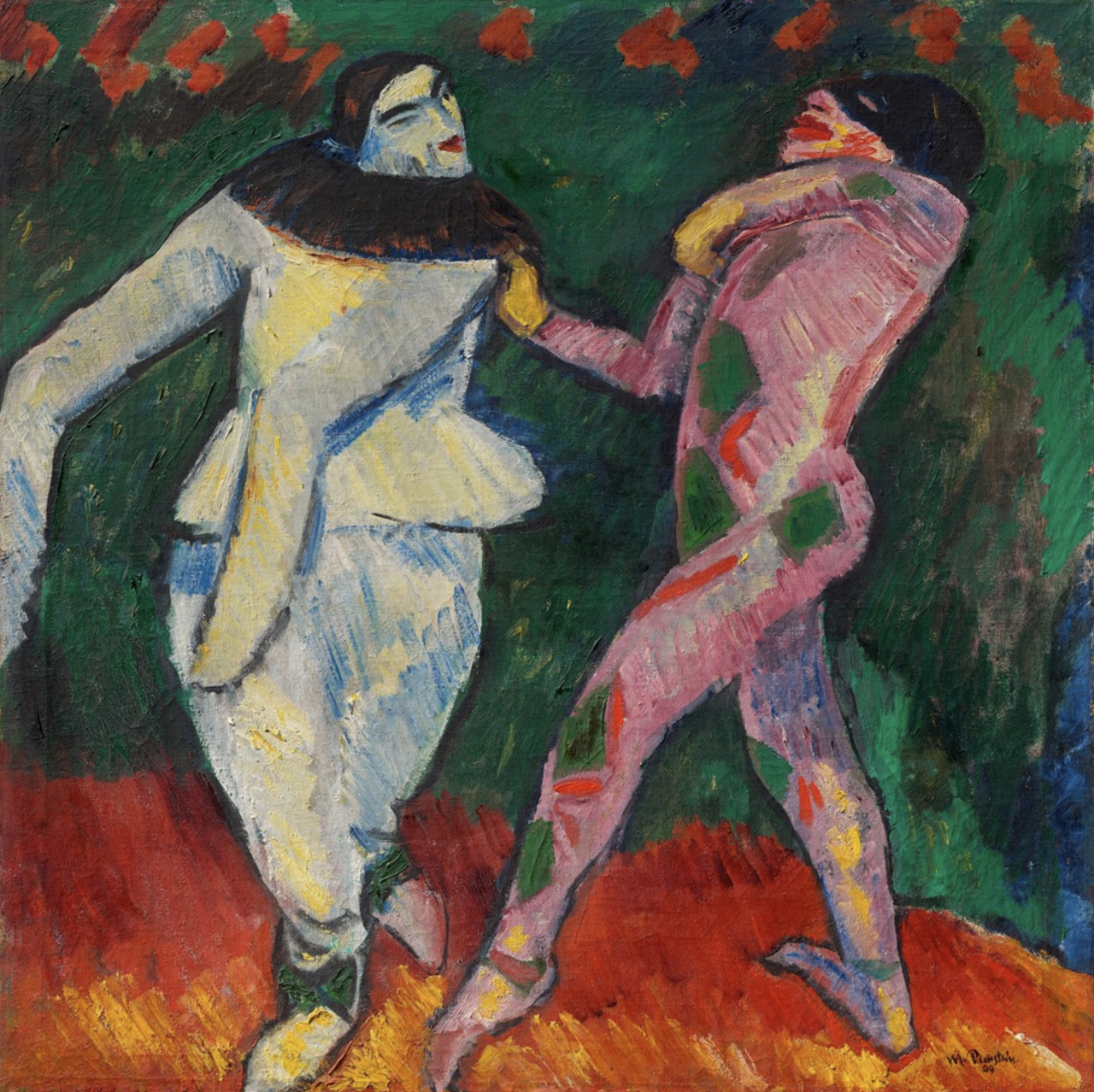Max Pechstein’s Russisches Ballett, created in 1909 at the hight of the Expressionist movement known as “Die Brücke”, will be one of the highlights of the Selected Works auction scheduled for 2nd June 2022 in Berlin. New to the market, the painting was privately owned for over 65 years and has been exhibited at numerous museums, including the Brücke Museum, the Berlinische Galerie, the Puskhin State Museum of Fine Arts in Moscow, the Staatliche Kunstsammlungen Dresden, and the New National Gallery in Berlin.
“Never before has a comparable painting by the artist been offered for sale on the German or international market. The way in which the painter’s and the dancer’s art are so passionately combined makes ‘Russisches Ballett’ a visual paragon for the transition into a new epoch.”
Dr. Markus Krause, Grisebach Director and Partner, Specialist in Modern Art
The cultural topography of Europe in the years just after 1900 resembled a landscape on the verge of a volcanic eruption. There was seething and rumbling in all branches of the arts, a push for liberation from the conventions of traditional forms of expression. Paris and Berlin were the art capitals of Europe at the time. It is no accident that Expressionism and modern dance developed concomitantly. In 1909, impresario Sergei Diaghilev founded the famous Ballets Russes in Paris, transcending classical dance in favour of conveying emotion and expressivity. The contemporary public was electrified, as was Max Pechstein, the only artist of Die Brücke movement to live in Paris himself. Concurrently with the genesis of the innovative Russian ballet troupe, he painted his version of Russian ballet dancing, a pas de deux between Harlequin and Pierrot – the first, full of vim and braggadocio; the other, shy and awkward. The colour scheme selected by Pechstein underscores the image’s contrasts: Red and green stand in counterpoint, while the snow-white costume of Pierrot, suggestive of innocence, clashes with the loudly colourful, geometrically patterned garb of Harlequin, who sports a daemonic-looking mask to top it all off.
For Pierrot and Harlequin, performing in the limelight is a pleasurable game – and their joyous enthusiasm has spilled over onto Max Pechstein: Painting with bold freedom, virtuosic verve, an exceptionally refined use of colour and psychological insight, he created what ranks as a key work in an oeuvre that would span half a century. Without a doubt, Russisches Ballett from 1909 is a work of top-notch museum quality.
Micaela Kapitzky
